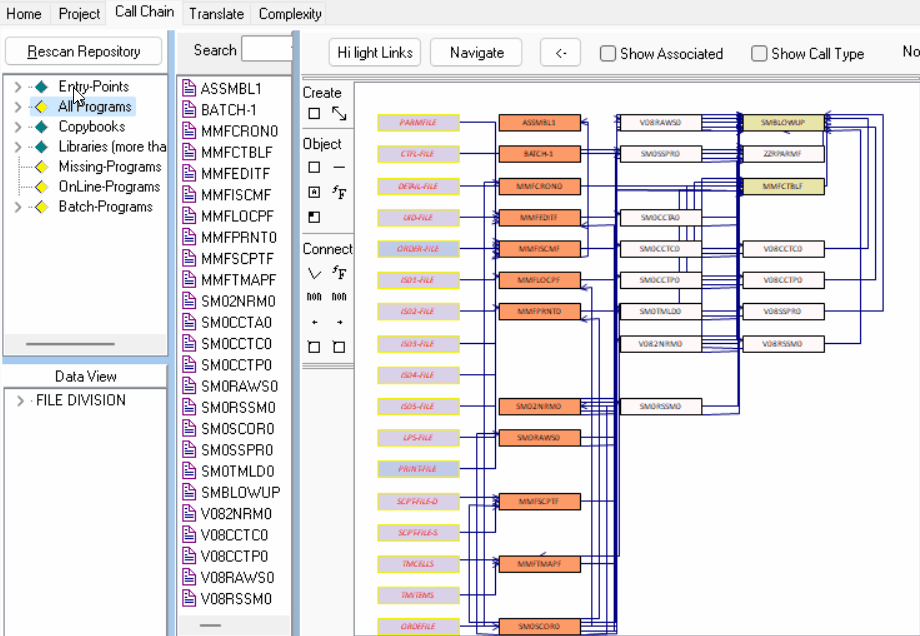What is Mainframe Modernization? Understanding the 5 R's of Migration
Mainframe modernization means updating COBOL-based systems to use modern platforms, architectures, and programming languages. Organizations take different paths to achieve this, often described as the 5 R's of migration: Refactor / Rewrite, Rehost / Replatform, Repurchase, Retire, and Retain.
Each approach differs in cost, speed, and long-term benefit. Refactoring or rewriting takes more effort but provides flexibility for future growth. Rehosting or replatforming delivers faster, lower-cost results with fewer code changes.
While rehosting remains popular, many organizations now prefer refactoring to Java or C#. These languages integrate easily with cloud systems and are supported by a large developer community.
The sections below explain each modernization approach, with practical examples and recommendations.
Refactor / Rewrite
In application modernization, refactoring usually means restructuring code to improve quality, testability, and maintainability. In legacy modernization, refactoring is often broader: it can include moving from COBOL to Java or C#, changing the runtime platform, and preparing the application for deployment in the cloud.
The main benefit appears when the application's language changes from COBOL to a modern language. The long term value lies in the business logic, not in how that logic was expressed in COBOL. In other words, the COBOL itself is not what is strategic to the business. The logic is.
A key decision in this path is whether to use an automated translation platform, such as SoftwareMining, or to attempt a manual rewrite. Manual rewrites of large systems are high risk. They can lose business rules, introduce scope creep, and stall after years of effort. We have seen customers come to us after failed manual rewrites and complete the migration using automated COBOL-to-Java translation.
Automated translation also has concerns, including handling GO TO statements, POINTERS, and performance tuning. See the COBOL to Java / C# Conversion FAQ. These issues are solvable, and we have addressed them repeatedly in production scale COBOL modernization projects. See our migration success stories.
Rehost / Re-platform
Rehosting or re-platforming keeps most of the COBOL code in place. Typical changes include moving from VSAM or IMS data stores to SQL databases, or shifting execution from a mainframe to virtualized or cloud based infrastructure.
Because it avoids large code changes, this is usually the least invasive option. It can cut platform cost in the short term with minimal disruption to the running application.
Even so, testing is still critical. Banks, insurers, and government agencies cannot switch core workloads without proving that the new environment behaves the same way. Some teams rely on spot testing, but most will still need structured test scripts and production like data. Organizations that have already rehosted often preserve those test assets so they can later move on to Refactor / Rewrite.
Re-purchase
Re purchase means replacing the in house application with a commercial off the shelf product. In many cases, if a viable off the shelf alternative existed, the organization already moved to it. The systems that remain tend to be highly customized and unique to the business. That is why they are still on the mainframe.
Large enterprise platforms such as ERP suites can sometimes be adapted to cover parts of the workload. However, these solutions often increase vendor lock in and create ongoing customization cost. For many core systems, "replace it with a package" is not practical.
Retire
Full retirement sounds appealing but is often more complex than expected. Teams may believe that a component is no longer needed, only to discover that it quietly feeds downstream systems or supports a regulatory reporting function.
A function that looks isolated may in fact depend on shared code, shared data, or shared security models. Accurately deciding what can be shut down and what must be preserved requires deep analysis. When a function cannot be retired and no packaged replacement fits, the enterprise is left with two realistic paths: continue paying to run it as is, or consider Refactor / Rewrite or Rehost / Re-platform.
Retain
If none of the other strategies are viable, the default option is to retain. In practice, "retain" means keeping the COBOL application largely as is.
In many organizations, the remaining mainframe applications are core, specialized, and business critical. If re purchase, retirement, and simple rehosting were easy, they would already have happened.
The real value in these systems is not the COBOL syntax. It is the proven, regulated business logic. That is why, even for applications that are retained today, leadership often revisits Refactor / Rewrite as the strategic path.

